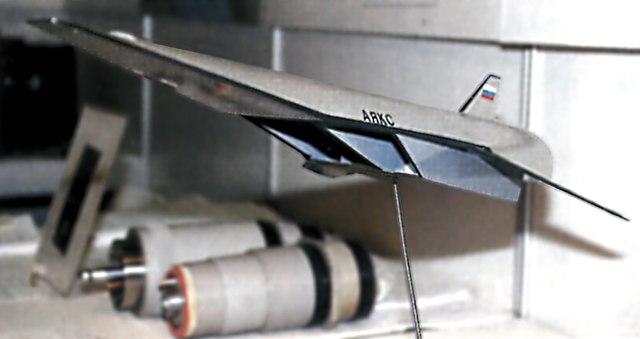A waverider is a hypersonic aircraft design that improves its supersonic lift-to-drag ratio by using the shock waves being generated by its own flight as a lifting surface, a phenomenon known as compression lift.
The Boeing X-51 forebody is an example of cone-derived waverider
The Chinese Project 0901 Flying Vehicle of CASIC shows another configuration of waverider.
Small-scale model of the Soviet/Russian Ayaks aircraft exposed at the 1993 MAKS Air Show, Moscow. It is still currently under development
Hypersonic flight is flight through the atmosphere below altitudes of about 90 km at speeds greater than Mach 5, a speed where dissociation of air begins to become significant and high heat loads exist. Speeds over Mach 25 have been achieved below the thermosphere as of 2020.
Reentry vehicle (RV) after an 8,000-kilometre (5,000 mi) flight, 1959. Note the blackened tip of the RV due to aerodynamic heating. Compare to the aerodynamic heating effect on the iron meteorite on the right.
Hypersonic weapon, demonstrating its non-parabolic trajectory (denoted in red), has a distinctive signature which is being tracked by one of the layers of the National Defense Space Architecture (§ NDSA) beginning in 2021. Tranche 0 is to begin deployment in 2022. The satellites of the NDSA, in gray, are to be deployed in constellations orbiting Earth, and constantly keep Earth in their view, depicted by the blue cones representing the fields of view of the satellite constellations. The satellites are to intercommunicate and serve the defensive systems arrayed against enemy hypersonic vehicles, and build a





